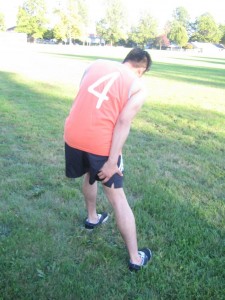The hamstring muscles are prone to injuries, particularly a pulled hamstring that typically occurs among athletes who engage in sports that involve sprinting. A hamstring strain involves damage to one or several muscles at the rear part in the thigh. Most cases of injuries to the hamstring muscles can be easily managed with non-surgical treatment options.
Injuries to the hamstring muscles can be a minor pull, limited tear or full tear. The muscle strains are graded based on their severity. A grade 1 strain is mild and typically heals quickly while a grade 3 strain involves full tearing of the muscle that can take months to fully heal. Most of the injuries tend to occur in the dense part of the muscle or where the muscle fibers join with the tendon fibers.
What are the possible causes?
Overloading the muscle is one of the main causes of a hamstring strain. This occurs once the muscle is stretched beyond its normal capacity or subjected with a sudden load.
The strain can also occur when the muscle lengthens as it contracts. Even though this sounds contradicting, this occurs when the muscle is extended while it is loaded.

While sprinting, the hamstring muscles shorten in an eccentric manner as the back leg is unbent and the toes are utilized to thrust off and move headlong. The hamstring muscles are not only extended at this time during the stride, but also loaded with body weight as well as the forced needed for forward motion.
What are the risk factors?
- Tightness of the muscles
- Muscle imbalance
- Poor conditioning
- Muscle fatigue
- Activities engaged in
What are the symptoms?
In case the hamstring is strained while sprinting in full stride, there is abrupt piercing pain in the back of the thigh. This will force the individual to stop, hop using the good leg or even fall. Other symptoms that can occur include the following:
- Swelling during the initial hours after the injury
- Weakness in the hamstring that lasts for weeks
- Bruising or discoloration of the back part of the leg below the knee for the first few days
Diagnosing injuries to the hamstring muscles
The doctor will ask about the injury during the physical examination and assess the thigh for tenderness or bruising. The back part of the thigh is pressed to check if there is pain, swelling, weakness or a possible muscle injury. The imaging tests used by the doctor to confirm a diagnosis includes an X-ray and MRI.
Treatment
The treatment for hamstring strains will depend on the type of injury sustained, the severity and the expectations of the individual. The objective of the treatment is to help the individual resume his/her activities.
Non-surgical treatment
The commonly used treatment for hamstring strains is the RICE method (rest, ice, compression, elevation). The individual should take a break from the activity that caused the strain. The application of an ice pack at 20 minutes at a time throughout the day along with compression can prevent swelling and pain. Lastly, the affected leg must be raised while resting to reduce the swelling. You can learn more about this effective treatment option by enrolling in a class on first aid today.
